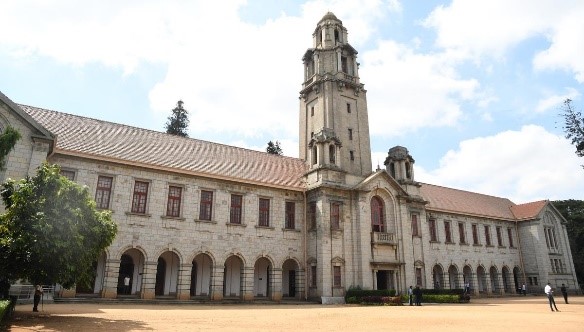Published on: June 9, 2022

IISC BENGALURU
IISC BENGALURU

Why in news?
The Indian Institute of Science (IISc), Bengaluru, is the fastest rising South Asian University among the coveted QS World University Rankings top 200 varsities, having gained 31 places while four IITs have also figured in the category attaining a higher rank compared to the previous edition.
Highlights:
- Quacquarelli Symonds (QS), London based global higher education analyst, on released the 19th edition of the world’s most consulted international university ranking.
The ranking of institutions:
- The Indian Institute of Technology, Bombay, which has bagged the 172nd position, is India’s second best institution, rising five places while IIT Delhi has risen eleven places to bag 174th rank.
- The IIT Kanpur has risen thirteen places to its highest position (264) in the history of these rankings, while the IIT Roorkee rose 31 places to its highest rank ever (369).
- However, prominent universities like the Jawaharlal Nehru University, Delhi University and Jamia Millia Islamia have slipped in the coveted ranking.
- The Delhi University which is the 10th best Indian university to figure in the 19th edition of the world’s most consulted international university ranking, has slipped to the 521-530 category from 501-510 bracket earlier, it showed.
- JNU’s ranking which was between 561-570 earlier declined to figure in the 601-650 bracket.
- Jamia Millia Islamia which was between 751-800 last year is now between 801-1000.
- The rankings showed that Jamia Hamdard has declined to figure in the 1201-1400 bracket from being ranked between 1001-1200 in the last edition.
- Among universities outside Delhi which have seen decline in their rankings are University of Hyderabad (from 651-700 to 751-800), Jadavpur University (from 651-700 to 701-750) and IIT-Bhubaneswar (from 701-750 to 801-1000).
- The rankings revealed that IIT Guwahati has gained eleven places, reaching its best result of all the editions of the QS World University Rankings while IIT Indore is the highest-ranking debutant in this edition, placed 396th globally.
- OP Jindal Global University is the highest ranked private university for the third year in a row, according to the rankings.
- IIT Bombay and IIT Delhi are the only two national universities to feature among the world’s top-100 in this crucial metric, ranking 59th and 72nd respectively and improving their rank year-on-year, it showed.
- A total of 41 Indian universities have featured in the ranking of which 12 have improved, 12 remained stable, 10 declined while seven universities are new entries.
- According to the rankings, 13 Indian universities have improved their research impact relative to global competitors, seeing a rise in the Citations per Faculty (CpF) score.
What does the ranking reveal?
- Conversely, Indian universities continue to struggle with QS’ measure of institutional teaching capacity. Thirty of India’s 41 ranked universities have suffered declines in QS’ Faculty and Student Ratio (FSR) indicator, with only four recording improvements, it showed.
- However, on an encouraging note, now two Indian universities rank among the top 250 for faculty and student ratio, compared to none in previous editions.
- The highest performing in this metric is Savitribai Phule Pune University (225th for FSR) and OP Jindal Global University (235th for FSR), followed by IISc Bengaluru (276th for FSR).
- “This edition of the QS World University Rankings reflects the excellent work that several Indian universities are doing to improve their research footprint, with positive consequences for their reputation on the global stage.
- India struggles also in the QS’ internationalisation metrics. For example, Amrita Vishwa Vidyapeetham (1001-1200) is the best-performing local institution for the proportion of International Faculty, ranking 411th globally.
- On the other hand, Amity University (1001-1200) is the national leader for the proportion of International students, ranking 542nd globally.
- This year’s QS World University Rankings is the largest ever, with 1,418 institutions across one hundred locations, up from 1,300 last year.
Way ahead
- Expansion of provision – both within universities and across the sector as a whole – will be necessary if India is to continue reaching new heights.
Measures taken
- “The National Education Policy (NEP), 2020 aims to achieve equity, inclusivity, and quality across the education sector. Prime Minister Modi, his ministers, and the University Grants Commission (UGC) are implementing new frameworks which should radically transform India’s higher education.
-
“Among these, the multi-modal education framework is instrumental in taking education to remote and inaccessible parts of the country and partially addressing the exponentially rising demand for university places in the largest democracy in the world.

